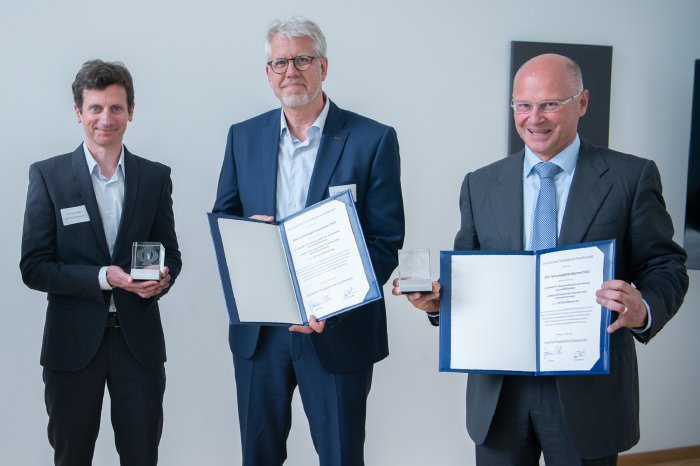TOPTICA and the University of Konstanz initially entered their joint research collaboration in 2004, motivated by the first demonstration of a self-referenced frequency comb generated from a femtosecond fiber laser. Since then, the partners have continued to conduct fundamental research into the physics of ultrafast lasers, and to transfer their newfound knowledge from academia into state-of-the-art products. Notably, the joint work by the partners has led to the realization of passively phase-locked frequency combs, representing a significant improvement over prior technologies which typically require the use of active control loops to stabilize a comb’s offset frequency. Since 2016, this technological breakthrough has been implemented in TOPTICA’s Difference Frequency Comb (DFC) products. More recently, the collaborators have developed a deeper understanding of the underlying mechanisms affecting the phase noise of fiber-based frequency combs and managed to apply this knowledge to the design of systems with free-running linewidths below 5 kHz across their entire frequency span from the radio frequency range up into the optical regime.
The award was presented to Alfred Leitenstorfer (University of Konstanz), Wilhelm Kaenders and Florian Tauser (both TOPTICA) by DPG’s vice president Lutz Schröter on the occasion of the German Physical Society’s (DPG) annual “Knowledge and Technology Transfer Forum”.
Wilhelm Kaenders, founder and member of the executive board at TOPTICA Photonics, considers the collaboration to be of enormous benefit to both sides: “Over the course of our collaboration, we managed to completely displace traditional free-space laser systems with our fiber technology within certain application areas. Even though meaningful cooperation requires patience and adequate resourcing, as a company we stand to benefit not only from the technological advances, but also from our ability to attract highly educated graduates as our future employees. At the same time, the symmetric, collaborative effort of developing robust laser technology can add significantly to the capabilities and attractiveness of our academic partner”.
Alfred Leitenstorfer, professor of Ultrafast Phenomena and Photonics and director of the Center of Applied Photonics, describes the mutual advantages of the collaboration from his perspective: “Aside from the scientific aspects which are always central to our work as fundamental researchers, our students and young researchers gain exposure to the way a high-tech company operates.”
Florian Tauser, former PhD student of Alfred Leitenstorfer who formed part of the initial technology transfer team in 2004, and TOPTICA’s director of research and development for ultrafast fiber lasers, adds: “Personally, I have always taken great satisfaction in the knowledge that my work as a PhD student has resulted in real-world products and continues to make an impact for the company and our customers.”
DPG Technology Transfer Prize
The German Physical Society (DPG) recognizes successful technology transfer from research institutions into companies with its annual Technology Transfer Prize. The prize is awarded jointly to the institute, from where the technology originates, the responsible transfer agency and the company, which implements the technology in its products. The award consists of a glass trophy and a certificate.
Press release of the German Physical Society

